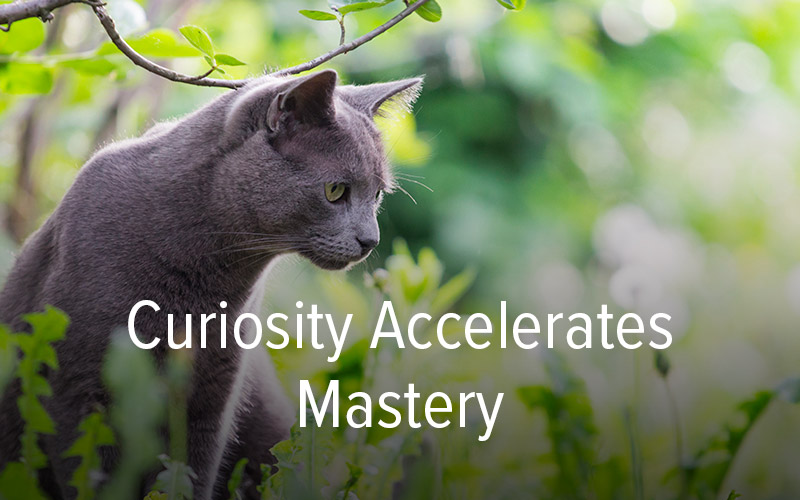
The remarkable feline brain has been programmed by roughly 30 million years of evolution into that of a dogged information gatherer and pattern recognizer. Cats are the epitome of curiosity and what they accomplish during their daily explorations is really knowledge mastery.
Think about this little Russian Blue for a moment. Like all cats, she spends a part of every day on the prowl. The vast array of information that she seeks and obtains through the motivating power of curiosity gives her a near-perfect map of the property she inhabits and controls—a confident and correct sense of who is friend, foe, or food. And she updates her knowledge whenever doubt and uncertainty creep in. The famous curiosity of cats is really that updating process made plain. Move a chair in the living room or rearrange the garden, and she immediately realizes the map in her head is not the same as the data now streaming in for comparison.
Knowledge is vital and she is unremitting in its accurate acquisition. She is especially attuned to what psychologists call an information gap. When something changes, our cat quickly sets about exploring the altered landscape and recreating a new map that is confidently navigable for pursuing prey or escaping predators. She closes the information gap. Doubt is banished and mastery is attained. It’s a matter of life and death for her, so she strives to master knowledge because it vastly improves the chances of mastering her fate.

This, in fact, may be the biological source of uncertainty in all mammals including the human variety. Uncertainty is felt when sensory information about the terrain, an idea, or a face is held in working memory, but it does not correspond with the patterns being pulled in from long-term memory. As shown in the illustration at right, it is this conflict that produces the information gap that leads to both uncertainty and curiosity.

In psychological experiments, the effect of curiosity on student performance is profound. In a set of studies that looked at both the underlying physical circuitry involved in curiosity (prefrontal cortex, caudate, hippocampus, etc.) and its empirical effect on memory, Kang, et al., found a direct correlation with learning.
“Curiosity showed a strong effect on subsequent recall of the answers to the questions that were initially guessed incorrectly…Consistent with the fMRI findings, these findings suggest that curiosity activates memory regions differently in response to surprising (incorrectly guessed) answers.”
For good reason, the provocative title of Kang’s research paper on the motive power of curiosity is “The Wick in the Candle of Learning.” As Kang notes, people in the education industry would do well to figure out how to prime students’ hunger for knowledge using small amounts of information tinged with uncertainty.







